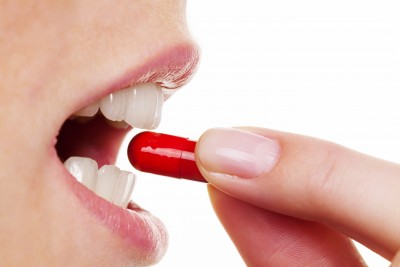Oral Sedation Dentistry Drugs

The realm of oral sedation dentistry has revolutionized the way patients experience dental care, transforming what was once a daunting and anxiety-filled encounter into a relaxed and comfortable experience. At the heart of this transformation are the medications used to induce a state of calm and relaxation, allowing patients to undergo dental procedures with minimal stress and anxiety. This article delves into the world of oral sedation dentistry drugs, exploring their types, mechanisms of action, benefits, and the importance of their careful administration.
Introduction to Oral Sedation
Oral sedation dentistry involves the use of pharmacological agents to help patients relax during dental treatments. These medications are administered orally, hence the term “oral sedation,” and work by depressing the central nervous system, thereby reducing anxiety and discomfort. The goal of oral sedation is not to render the patient unconscious but to provide a state of deep relaxation, making dental procedures more tolerable.
Types of Oral Sedation Drugs
Several classes of drugs are used in oral sedation dentistry, each with its unique characteristics and effects. The choice of drug depends on the patient’s medical history, the nature of the dental procedure, and the desired level of sedation.
Benzodiazepines: These are the most commonly used drugs for oral sedation. Benzodiazepines, such as triazolam, lorazepam, and diazepam, work by enhancing the effect of the neurotransmitter gamma-aminobutyric acid (GABA) in the brain, which results in a calming effect. They are known for their effectiveness in reducing anxiety and inducing sleep.
Non-benzodiazepines: While not as commonly used as benzodiazepines for oral sedation, non-benzodiazepines like zolpidem and eszopiclone can be used for sedation due to their ability to induce sleep. However, their use is less prevalent in dental settings.
Mechanisms of Action
Oral sedation drugs primarily act on the central nervous system (CNS), affecting neurotransmitters that regulate sleep, anxiety, and relaxation. Benzodiazepines, for example, bind to GABA_A receptors, facilitating the inhibitory effects of GABA and leading to a decrease in the activity of neurons, which in turn produces a calming effect. This mechanism of action allows patients to feel relaxed and less anxious about their dental procedures.
Benefits of Oral Sedation
The benefits of oral sedation in dentistry are numerous and significant:
- Reduces Anxiety and Fear: The primary advantage is the reduction of dental anxiety, making it possible for patients with fear or anxiety to undergo necessary dental treatments.
- Increases Comfort: Patients are more comfortable during procedures, which can lead to a more positive dental experience.
- Improves Compliance: With reduced anxiety, patients are more likely to comply with dental recommendations and return for follow-up appointments.
- Enhances Procedure Efficiency: Sedated patients are less likely to move or experience discomfort, allowing dental procedures to be completed more efficiently.
Administration and Monitoring
While oral sedation offers many benefits, it is crucial that these drugs are administered by trained professionals in a controlled environment. Dentists must be certified in oral sedation to ensure patient safety. This includes:
- Pre-procedure Evaluation: A thorough medical history and assessment to determine the appropriate dosage and type of sedation.
- Dosage Control: Ensuring the patient receives the correct dose to achieve the desired level of sedation without compromising safety.
- Monitoring: Continuous monitoring of the patient’s vital signs and level of consciousness during the procedure.
- Post-procedure Care: Providing clear instructions for post-sedation care and ensuring the patient has a responsible adult to escort them home.
Conclusion
Oral sedation dentistry has opened doors for individuals who previously avoided dental care due to fear or anxiety. By understanding the types of drugs used, their mechanisms of action, and the careful administration required, patients can feel more at ease about undergoing sedation. As with any medical treatment, it’s essential to consult with a qualified dental professional to discuss the benefits and risks of oral sedation and determine the best approach for individual needs.
What is the most commonly used drug for oral sedation in dentistry?
+Benzodiazepines, particularly triazolam, are among the most commonly used due to their efficacy in reducing anxiety and inducing relaxation.
How are oral sedation drugs administered?
+These drugs are administered orally, usually in the form of a pill or liquid, before the dental procedure to help the patient relax.
Do oral sedation drugs render patients unconscious?
+No, the goal of oral sedation is to provide a state of deep relaxation and reduce anxiety, not to make patients unconscious. Patients remain awake but relaxed throughout the procedure.
What precautions should be taken after oral sedation?
+Patients should have a responsible adult escort them home and should not operate machinery or vehicles for the rest of the day. They should also follow any specific post-procedure instructions provided by their dentist.
In the realm of oral sedation dentistry, the careful selection and administration of sedation drugs play a pivotal role in ensuring patient comfort and safety. As dental care continues to evolve, the role of oral sedation will remain vital in helping patients overcome their fears and receive the care they need.

